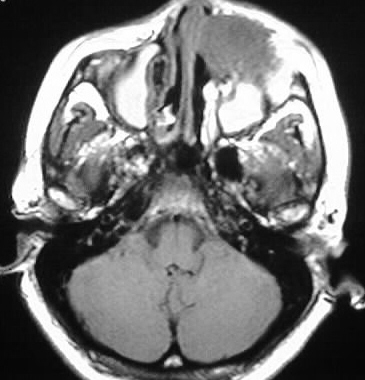
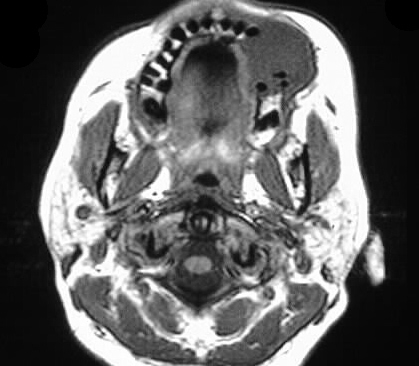
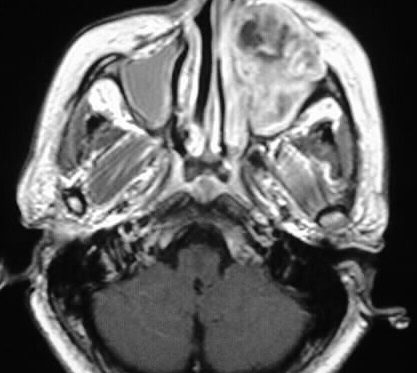
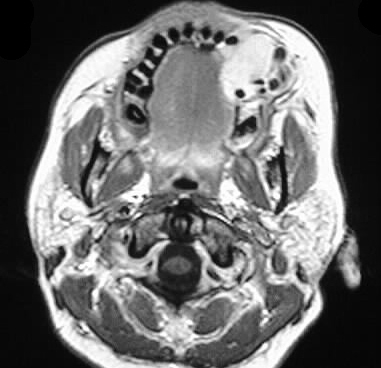
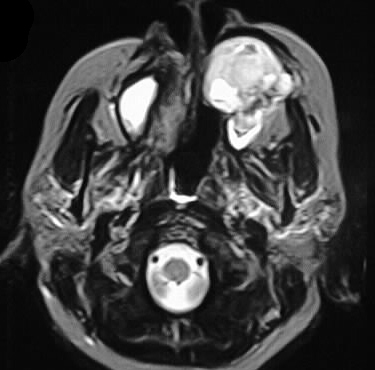
Spindle Cell Sarcoma
Findings:
An aggressive soft tissue mass destroys the inferior
aspect of the left maxillary sinus and superior alveolar ridge. The mass
shows homogenous isointensity to muscle on T1, enhances brightly, and shows
heterogenous hyperintensity on T2. Postobstructive sinus disease is present
on the left as well. The right maxillary sinus is filled with proteinaceous
signal material.
Differential Diagnosis:
The appearance of this lesion is relatively nonspecific,
but an aggressive lesion is certain. Tumors that cause extensive bone destruction
in this location include squamous cell carcinoma, malignant salivary gland
tumors, and sarcomas. Inverting papilloma is a less likely possibility,
and would not be expected to cause this degree of bone destruction without
remodeling.
Discussion:
Of sarcomas involving the maxillary sinus, osteosarcoma
and chondrosarcoma are the most common cell types, but are still rare in
comparison to squamous cell carcinoma. Other types of sarcomas (spindle
cell, MFH, neurofibrosarc, liposarc etc.) are extremely uncommon in the
paranasal sinuses. The maxillary sinus is by far the most common location
of paranasal sinus squamous cell carcinoma. Aggressive lesions are characterized
by extensive bone destruction without significant remodeling, but there
are no defining characteristics of the above lesion to indicate that it
is a sarcoma.